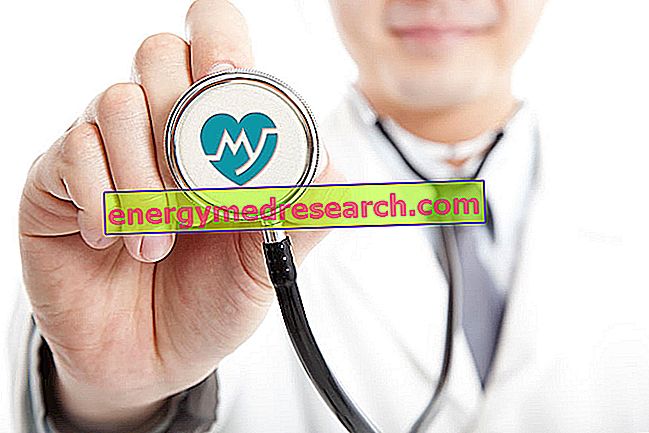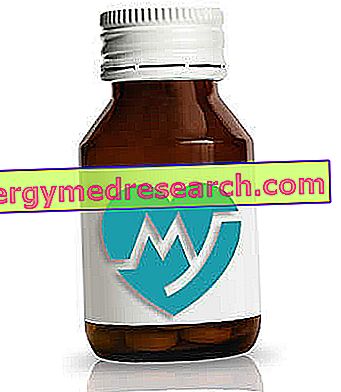By Dr. Nicola Sacchi - Author of the book: Drugs and doping in sport -
Inflammation and inflammatory response
The inflammatory process is a complex cellular response system that determines a series of biochemical events activated to repair damaged tissue.

The elementary phenomena, which constitute the inflammatory response, include vasodilation and increased permeability, which favor the passage of liquids and nutrients from the blood stream to the damaged tissue; moreover, the infiltration of leukocytes in the lesion area causes the elimination of damaged molecular structures and waste metabolites. The inflammation serves, therefore, to destroy and confine the harmful agent, but at the same time it serves to set in motion a series of mechanisms that favor the repair or replacement of the damaged tissue. Furthermore, it generates a lowering of the pain threshold, a necessary condition to prevent the injured area from being subjected to further stresses that could damage it more.
Clinically, the key signs of inflammation are: redness, swelling, heat, pain, functional alteration of the inflamed area. All local manifestations of an increased tissue vascularization and permeability, necessary to repair the injured area. These events are activated by the local production of prostaglandins, substances produced starting from arachidonic acid.
The inflammation, although it represents a reparative process for the body, if not controlled can lead to negative consequences, such as permanent and irreversible pain and alterations of the tissues; therefore, often in the case of inflammation, drugs are used to alleviate the symptoms of this process.
I Non-steroidal anti-inflammatory drugs
The drugs used to treat inflammation are called anti-inflammatory drugs. One of the main classes of anitinflammatory drugs is NSAIDs (non-steroidal anti-inflammatory drugs).
The acronym FANS means therefore the set of substances with anti-inflammatory, analgesic and antipyretic action with non-steroid molecular structure. These substances compete with arachidonic acid in binding cyclooxygenase (COX), an enzyme responsible for the first step in the production of numerous molecules involved in the inflammatory process.
The so-called arachidonic acid cascade is at the base of inflammatory processes, in fact from the peanut acid the body produces the so-called eicosanoids: prostaglandins, prostacyclines, leukotrienes and thromboxanes. These substances are involved in cellular defense and repair processes, therefore they are produced whenever an external stimulus (infection, mechanical damage, thermal or chemical stress, etc.) tends to damage a certain tissue.
NSAIDs are the main medical tool for combating inflammation. They are in fact used in the treatment of rheumatic and non-rheumatic diseases such as rheumatoid arthritis and osteoarthritis, but also tendinitis, bursitis, and in all those manifestations of the musculoskeletal system sustained by the presence of inflammatory phenomena, consequently also in the event of injury resulting from the sporting practice.
NSAID abuse: side effects
Excessive use and chronic use of anti-inflammatories can lead to several side effects such as:
- gastric damage with mucosal ulceration due to reduced production of gastroprotective prostaglandins;
- nephritis, reduced kidney function and renal complications due to the exfoliation of the renal epithelium;
- liver damage;
- block of platelet aggregation and consequent hemorrhage due to the reduced production of thromboxanes;
- inhibition of uterine motility;
- hypersensitivity reactions to NSAIDs (see allergy to salicylates)
Use and abuse of NSAIDs in the sports field
The use of anti-inflammatories in the sports field is absolutely justified in the treatment of the numerous injuries generated by sports practice. Athletes in fact use these drugs to alleviate discomfort caused by trauma, to reduce the symptoms of muscle, tendon, bone and joint inflammation.
NSAIDs are not included in the classes of substances prohibited by the anti-doping rules, therefore sportsmen can use them without incurring disciplinary sanctions. In fact, these substances are usually used by professional athletes to alleviate inflammation, injuries and acute pain caused by sports. However in many cases athletes use these drugs incorrectly and inappropriate.
Anti-inflammatory therapy to heal injuries, which should only be followed for 5 to 8 days, is often continued for several weeks. The continuous and prolonged use of anti-inflammatories many times establishes the side effects previously described. However the athlete tries to recover quickly from the injury at the expense of the health of the rest of the body.
Research conducted in different countries shows clearly that there is a wide use of NSAIDs, sometimes unjustified, by athletes. Often the athlete uses these medicines without consulting the doctor; this behavior can lead to inappropriate therapies that can lead to abuse and can lead to health damage. This practice often proves to be devoid of medical requirements regarding doses used, duration of treatment and appropriateness of use. All this can easily lead to the onset of the numerous side effects described. The use of NSAIDs has become so natural that the numerous negative effects that are only taken into account, unfortunately, when they occur are often not considered.
If the analgesic effect is already noticeable in the hours following the use of the NSAID, the situation regarding the anti-inflammatory action is instead very different and more complex. In fact, it may also take several weeks of therapy to treat inflammatory states deriving from trauma and injuries, in particular those caused by sports. Consequently also the therapeutic intervention is prolonged in an excessive manner, obviously involving a greater risk of the appearance of the side effects. This situation, often complicated even by the doctor's failure to supervise, is often the cause of the abuse of these medicines.
In addition, athletes also use anti-inflammatories to be able to compete in less than optimal physical conditions. Many sportsmen take NSAIDs to compete or even simply train even in the presence of pain, joint inflammation, trauma, etc. This results in an absolutely incorrect use of these drugs that can lead to serious damage to health: doing physical activity and even competing under the action of NSAIDs reduces the perception of pain, consequently an athlete not feeling the annoyance of an eventual injury is led to overstress the injured area threatening to worsen the situation, as it simply did not feel the effects of inflammation, but did not resolve the event. Generally an inflammatory state promotes pain sensations whenever the inflamed area is stressed, while under the effect of NSAIDs the pain is not perceived and the athlete strains the area in question thus increasing the disorder, which will be perceived again as such when the effects of the drug disappear.
Use anti-inflammatories to promote healing from injuries, traumas, bruises, tendinitis, etc., is correct from a therapeutic point of view, but undergoing further physical efforts under the influence of these drugs leads to aggravate existing injuries.
It should also be added that some studies show that the use of NSAIDs improves endurance performance, through mechanisms that are not yet known, and this is often another reason for NSAID abuse.
A possible explanation for this effect can be hypothesized on the fact that prostaglandins also act in the central nervous system, in fact it seems that they increase the inhibitory gabaergic activity of the nervous system, therefore the action of the anitinfiammatori, reducing the activity of the gabaergic system, active the nervous system consequently increasing the capacity for physical work. Furthermore, type E prostaglandins reduce the adrenergic activity, consequently the action of the anti-inflammatories, which inhibit the release of these prostaglandins, also in this case can stimulate the nervous system by enhancing the adrenergic activity. These effects could give possible benefits, also in terms of improving physical abilities.
Abuse of NSAIDs by athletes is, for the aforementioned reasons, a very common practice that can lead to numerous health risks. To avoid these risks it is therefore essential to consult a doctor before undertaking any drug therapy.



